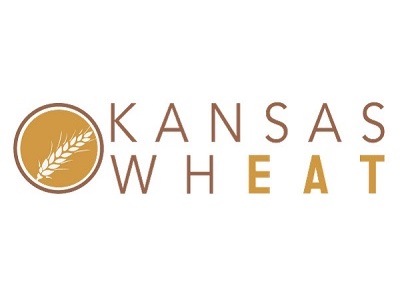Wheat Quality Council's 64th Annual Hard Winter Wheat Evaluation Tour Begins

About 83 people from 24 US states plus Mexico and Canada traveled in 20 cars on six routes between Manhattan and Colby on Tuesday, stopping at wheat fields every 15 to 20 miles along the routes, as part of the Wheat Quality Council's 64th Annual Hard Winter Wheat Evaluation Tour.
About half the participants had not been on the tour before. They were shown how to take yield measurements from tour alumni, using the formula provided by USDA's National Agricultural Statistics Service (NASS). This formula is based on 2012-2021 Kansas wheat objective yield data. Farmers can calculate their own field estimates using the same formula with instructions at kswheat.com.
Many tour participants had never stepped foot in a wheat field before and had only seen these Kansas plains from the window seat of passing airplane. These are the millers, bakers, food processors and traders who buy the wheat that Kansas farmers grow. If these fields make it to harvest, the resulting crop will go into breads, but also a number of other food items, from snack cakes to the coating on your favorite chicken wings.
Every tour participant makes yield calculations at each stop based on three different area samplings per field. These individual estimates are averaged with the rest of their route mates, and eventually added to a formula that produces a final yield estimate for the areas along the routes. While yields tend to be the spotlight of the Wheat Quality Tour, the real benefit is the ability to network among the grain chain. This tour gives Kansas farmers the chance to interact with and influence their customers around the globe, on the tour, as well as at the #wheattour22 hashtag.
Tuesday's cars of wheat tour scouts made 248 stops at wheat fields across north central, central and northwest Kansas, and into southern counties in Nebraska. The calculated yield is based on what scouts saw at this point in time. A lot can happen between now and harvest. The calculated yield from all cars was 39.5 bushels per acre, which was 20 bushels lower than the yield of 59.2 bushels per acre from the same routes in 2021.
Statewide, based on May 1 conditions, Kansas' 2022 winter wheat crop is forecast at 271 million bushels, down 93 million bushels from last year's crop, according to NASS. Average yield is forecast at 39 bushels per acre, down 13 bushels from last year. Acreage to be harvested for grain is estimated at 6.950 million acres, comparable to last year's seven million acres. This would be 94 percent of the planted acres, below last year's 96 percent harvested.
For the week ending May 15, Kansas winter wheat condition rated 17 percent very poor, 24 percent poor, 35 percent fair, 22 percent good and 2 percent excellent. Kansas winter wheat jointed was 93 percent, near 95 percent last year. Headed was 60 percent, ahead of 54 percent last year, and near 58 percent for the five-year average.
The overall theme for day one of this year's tour is spotty. Stand establishment was spotty last fall. The crop is thin and short. Jeanne Falk-Jones, Kansas State University Multi-County Agronomy Specialist, reported that the crop was a week or two behind average about a month ago, but with the hot temperatures lately, it is now about a week ahead of average.
Romulo Lollato, K-State Wheat Extension Specialist, reported that yields varied greatly based on cropping system. Wheat after fallow looked better than wheat after corn or soybeans. "We saw wheat today that looked better than other fields, but comparing to last year, the yield potential is not nearly as good," he said.
While the USDA/NASS estimated 6 percent abandonment, Lollato estimates abandonment will be more like 8 to 10 percent.
"We need to be thankful to breeders that we have a crop this year," said Lollato. "Genetics are playing an important part. Genetics will have a huge impact on baking quality and protein." He added, kernels are currently developing, so we can still get test weight if we get rain. Heat stress can hurt the test weights.
If there was any good news from day one, it's that there was very little disease pressure. There haven't been reports of stripe rust in the area because of the lack of moisture.
In addition to Kansas reports, scouts from Nebraska and Colorado met the group in Colby to give reports from their states.
Kent Lawrence, a farmer from Hitchcock, Nebraska, reported that USDA estimates the Nebraska crop at 36.9 million bushels, which is down from 41.16 million bushels last year. Yield is estimated at 41 bushels per acre, down from last year's 49 bushels per acre.
Brad Erker, Executive Director of Colorado Wheat, estimated the crop at 40.1 million bushels, based on a yield of 28.6 bushels per acre, 1.4 million acres harvested and 30 percent abandonment rate. NASS estimates the Colorado crop slightly higher at 49.6 million bushels and 31 bushel per acre average yield. He said the wheat is only 8" to knee high.
These estimates are for this year's hard winter wheat crop during this current snapshot in time.
Wheat Tour 22 continues Wednesday with six routes between Colby and Wichita.
(Written by Marsha Boswell, Vice President of Communications, Kansas Wheat.)

